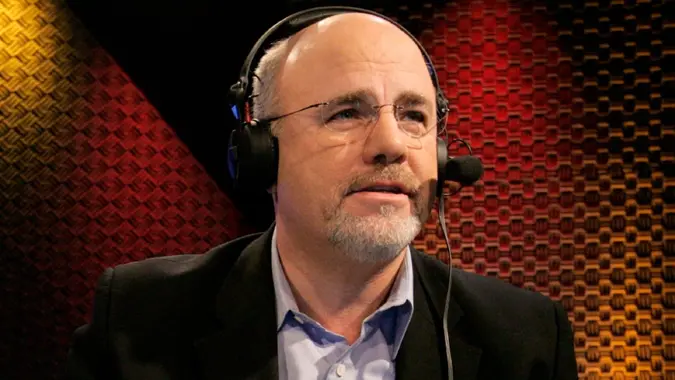4 Money Lessons Parents Should Teach Their Kids, According to George Kamel

Commitment to Our Readers
GOBankingRates' editorial team is committed to bringing you unbiased reviews and information. We use data-driven methodologies to evaluate financial products and services - our reviews and ratings are not influenced by advertisers. You can read more about our editorial guidelines and our products and services review methodology.

20 Years
Helping You Live Richer

Reviewed
by Experts

Trusted by
Millions of Readers
Personal finance expert George Kamel thinks most parents are missing the boat when it comes to money education. In a recent social media post, the Ramsey Solutions personality laid out four essential lessons every kid should learn about money.
These aren’t complicated investment strategies or advanced budgeting techniques. They’re basic principles that shape how children think about money for the rest of their lives.
Money Comes From Work
The first lesson sounds obvious, but Kamel said too many kids grow up thinking money appears magically when parents swipe cards or tap phones at checkout.
“Kids need to understand that money is earned through effort and time,” Kamel explained on his Facebook page. This connection between work and income forms the foundation for all other financial understanding.
Parents can teach this lesson early by showing kids how they earn money through their jobs. Simple explanations work best. For example, “Daddy goes to work and helps people with their computers, and they pay him money for that help.”
The lesson becomes more concrete when kids start doing age-appropriate chores for allowance. A 6-year-old who earns $2 for taking out the trash understands that work produces money in a way that abstract explanations can’t match.
Save for What You Want
Kamel’s second lesson tackles one of the biggest problems in American culture: instant gratification. Teaching kids to save for purchases builds patience and helps them understand the difference between wants and needs.
The saving lesson works best with specific goals. Instead of telling kids to “save money,” help them identify something they want to buy. Whether it’s a $20 video game or a $100 bike, having a target makes saving feel purposeful.
Parents can make saving visual and engaging. A clear jar where kids can watch their money grow works better than a bank account they never see. Some families use charts or apps that track progress toward savings goals.
The lesson extends beyond just accumulating money. Kids learn to evaluate whether purchases are worth the time and effort required to earn the money. A child who saved for two months to buy a toy often takes better care of it than one who received it as an impulse purchase.
Spend With Purpose
Kamel’s third lesson addresses thoughtful spending rather than mindless consumption. Kids need to learn that every purchase involves choosing one thing over another. This doesn’t mean being cheap or never having fun with money. It means making conscious decisions about purchases rather than buying impulsively.
Parents can model purposeful spending by explaining their decision-making process. When grocery shopping, show kids how you compare prices and choose between name brands and generic options. Explain why you decided to buy something or skip it.
Teaching purposeful spending helps kids become smarter consumers. They learn to ask questions like “Do I really need this?” and “Is there something better I could do with this money?”
Give Your Own Money Generously
Kamel’s fourth lesson might surprise some parents, but he believes generosity should be part of every child’s financial education.
Teaching generosity works best when kids give their own money rather than money provided specifically for giving. A child who donates $5 from their allowance learns generosity differently than one who gives away money handed to them for that purpose.
Parents can help kids find age-appropriate ways to give. Young children might put coins in church collection plates or donate toys they’ve outgrown. Older kids can research charities and choose causes they care about.
Generous kids often grow into generous adults who understand that money is a tool for creating positive change, not just personal comfort.
How To Teach These Lessons at Different Ages
The four principles work for children of all ages, but the teaching methods should match developmental stages.
For ages 3 to 7, focus on concrete experiences. Use clear jars for saving, simple chores for earning and opportunities to make basic spending choices. Generosity might involve sharing toys or putting coins in donation boxes.
Kids ages 8 to 12 can handle more complex concepts. They can research prices, compare options and understand percentages. Their savings goals can be larger, and they can take on more substantial chores for higher allowances.
Teenagers can learn about banking, budgeting and even basic investing. They can get part-time jobs and manage larger amounts of money while still living at home where mistakes aren’t catastrophic.
 Written by
Written by  Edited by
Edited by 


























